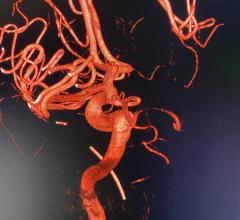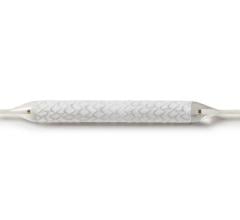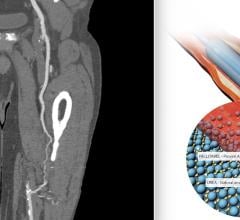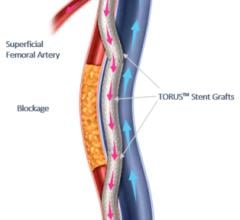September 30, 2011 — The American College of Cardiology Foundation (ACCF) and the American Heart Association (AHA) released an updated guideline for the diagnosis and management of peripheral artery disease (PAD). The goal is to help guide clinical decision-making related to PAD and improve patient outcomes.
The guideline includes expanded criteria for using the ankle-brachial index (ABI) for earlier diagnosis; increased efforts to ensure all patients have access to smoking cessation services; improved use of clot-preventing medications; as well as a more focused definition of effective interventions for avoiding limb amputations and treating aortic aneurysms.
Peripheral artery disease (PAD) is a common and dangerous condition that affects tens of millions of Americans and can restrict blood flow to the legs, kidneys or other vital organs. The disease remains under diagnosed and is often a sign of a more widespread accumulation of fatty deposits in the heart, brain or legs. If untreated, it is one of the most common causes of preventable heart attack, stroke, leg amputations and death.
When blood flow is reduced to the legs, walking may become difficult and painful, and amputation can occur. Decreased kidney blood flow can cause high blood pressure or kidney failure. Aneurysms of the aorta, the largest artery, can rupture and lead to death. Yet for many, PAD is asymptomatic and therefore may not lead to recognizable symptoms, delaying a prompt diagnosis.
“This document provides agreed upon approaches and treatments for PAD that vascular surgeons, vascular medicine specialists, cardiologists, pulmonologists, interventional radiologists and primary care clinicians can apply to help improve patient care,” said Thom Rooke, M.D., Krehbiel professor of vascular medicine, Mayo Clinic, Rochester, Minn., and chair of the writing group. “This guideline is especially important for PAD, which is often still treated less aggressively than heart disease, and we know that many patients do not yet receive ideal care.”
Of note, the guideline recommends lowering the age when ABI diagnostic testing should be performed from 70 years of age or older to 65 or older. This decision was based on mounting evidence demonstrating that people 65 and older have a one in five chance of having either symptomatic or asymptomatic PAD.
“Age alone appears to define a patient population at such a high risk of PAD that we can justify using a cost-effective and risk-free test like the ABI,” said Rooke. “It’s important to remember, when we check ABI to detect PAD in a patient without clear-cut leg symptoms, it is known that we are effectively assessing overall heart and vascular health. If PAD is detected, effective risk reduction medications are available to lower this risk.”
Other recommendations set forth by the writing group include:
· Strengthening efforts to help individuals with PAD quit smoking and, in turn, lower rates of heart attack, stroke and lower limb amputations; this includes consistently asking current and former smokers about tobacco use at each visit, as well as proactively offering support through counseling, pharmacologic therapies and/or formal smoking cessation programs.
· Considering leg artery angioplasty as a first line treatment for certain individuals with severe PAD who may face amputation. Because angioplasty does not provide an ideal treatment for all patients with PAD, for those in whom a lifespan greater than two years is anticipated, open (traditional) vascular surgery may be more durable and most effective.
· Understanding new data showing that aortic aneurysms can be safely treated by both traditional open surgical and less invasive endovascular (catheter-based) treatments with nearly equal efficacy and safety.
“When PAD is undetected and poorly managed, it is among the most costly cardiovascular diseases. Delays in care and inadequate use of proven risk reduction therapies continue to put lives at stake,” said Alan T. Hirsch, M.D., professor of medicine, epidemiology and community health in the Lillehei Heart Institute and cardiovascular division, University of Minnesota Medical School, and vice chair of the writing group. “While there have been progressive improvements in PAD care, it appears that even simple ‘interventions,’ like appropriate prescription of smoking cessation and exercise are not utilized by clinicians, health care systems, and payers. We still have a long way to go; the opportunity for prevention and earlier, life-saving interventions is immense. This guideline provides a road map.”
He added that additional promotion of guideline use by hospital and health systems would be expected to lead to major improvements in clinical outcomes.
The ACCF/AHA guideline, which updates the original 2005 recommendations, reflects a thorough review of new evidence-based clinical trial and other clinical data. It was developed in collaboration with representatives from the Society for Cardiovascular Angiography and Interventions (SCAI), Society of Interventional Radiology (SIR), Society for Vascular Medicine (SVM), and Society for Vascular Surgery (SVS).
The focused update of this guideline will be published in the Nov. 1, 2011, issue of the Journal of the American College of Cardiology.
For more information: content.onlinejacc.org


 March 20, 2024
March 20, 2024 








